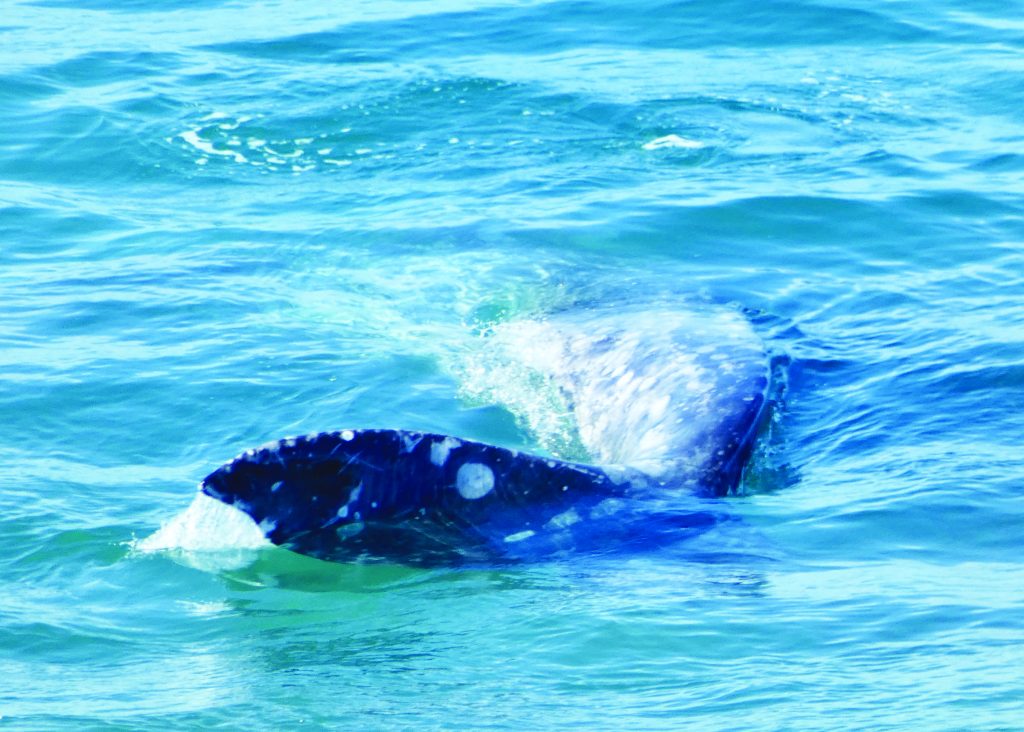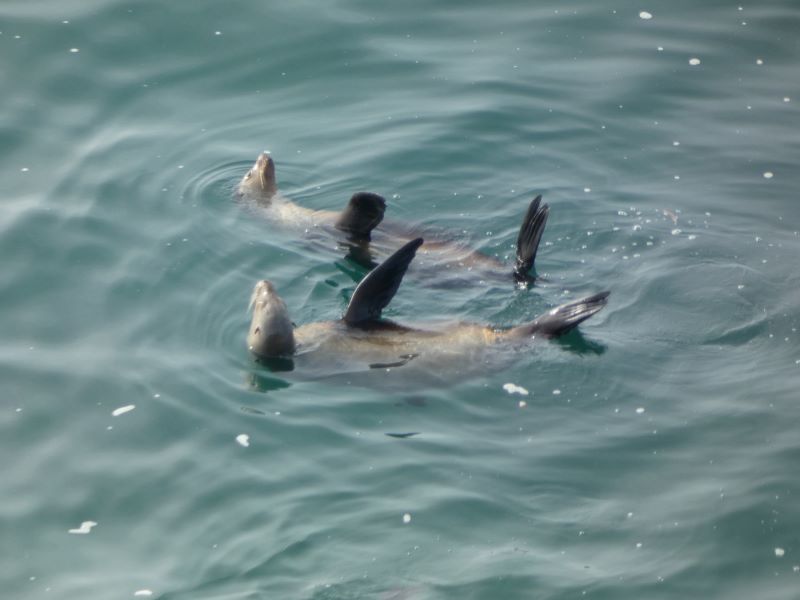
All photos by Suzanne Guldimann
They are fast and powerful swimmers and divers who love to hang out with their friends at the beach. When things are good, it’s a life of surf, sun, and sushi, but things aren’t alway easy for the Zalophus californianus, the California sea lion. This species came perilously close to extinction in the twentieth century and these intelligent, gregarious, fun-loving animals still face many challenges to survival.
Sea lions are pinnipeds, a clade that includes 18 species of true seals, 14 eared seals, and the walrus. Although they often get lumped together under the name “seals,” California sea lions belong to the family Otariidae, the eared branch of the seal family. Harbor seals and elephant seals, the two members of the “true seal” side of the pinniped family who live in local waters, have ears, too, but theirs’ are internal, with just a hole or tiny flap visible. Sea lions have little round external ears that are probably a legacy from the original ancestors of this whole family, the somewhat bear-like genus Enaliarctos.
Since the most one often sees of a seal or a sea lion is a sleek dark head popping out of the surf, ears—or the lack of them, is a quick way to tell one from the other, although sea lions have a more dog-like head than true seals—another legacy from their ursine ancestors.
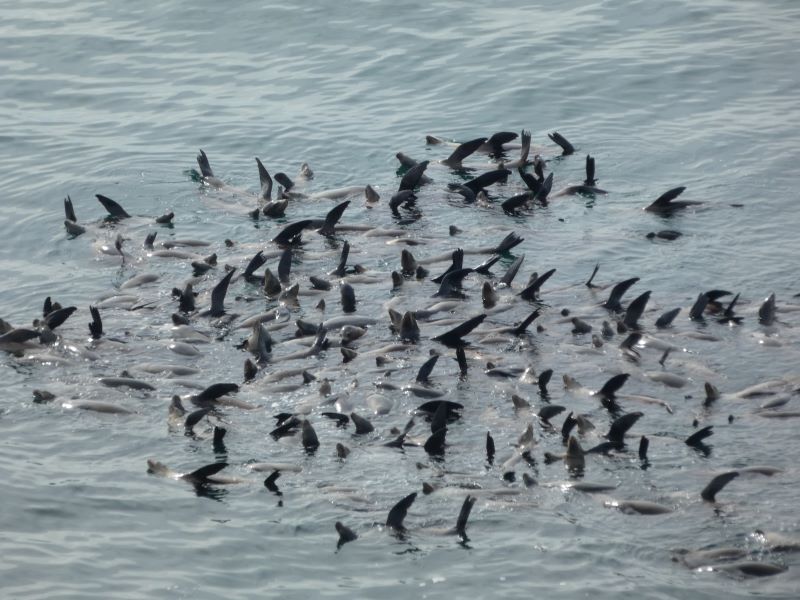
True seals use their back flippers to propel themselves, while sea lions swim with their powerful front flippers. Those flippers and a flexible pelvis that enables them to rotate their hind limbs around to have stubby feet instead of flippers give the sea lion’s ability to “walk” on land. That makes them faster and more maneuverable when they haul out of the water, and it enables them to climb up on rocks, buoys, docks, but also sometimes into trouble, like onto Pacific Coast Highway, or into boats.
California sea lions spend most of their lives in the water—their preferred hunting ground is the shallow nearshore zone, where upwelling provides a rich source of herring, anchovies, sardines and squid—but they also need to rest on dry land, where they sun and groom.
A thick, well-cared for fur coat functions like a wetsuit to keep sea lions insulated and warm in the water. That can cause problems, when humans attempt to get too close, but sea lions also come into conflict with humans in other ways. They are opportunists who are happy to take advantage of a pleasant sunny spot to warm themselves, or a snack from baited fishing lines or nets full of squid. California sea lions, like all marine mammals, are protected from human intervention by the federal Marine Mammal Protection Act, which was passed in 1972, just in time to prevent numerous marine mammal species from immediate extinction.
How close to extinction did the California sea lion come? It is estimated that at one point in the early twentieth century, there were only a few hundred left.
The number of California sea lions rebounded thanks to the Marine Mammal Protection Act, and several other key pieces of legislation, including the federal Clean Water Act and Clean Air Act, passed in 1970 and 1972, and California’s Coastal Act, approved in 1976, but this species still faces serious issues, most of them caused humans.
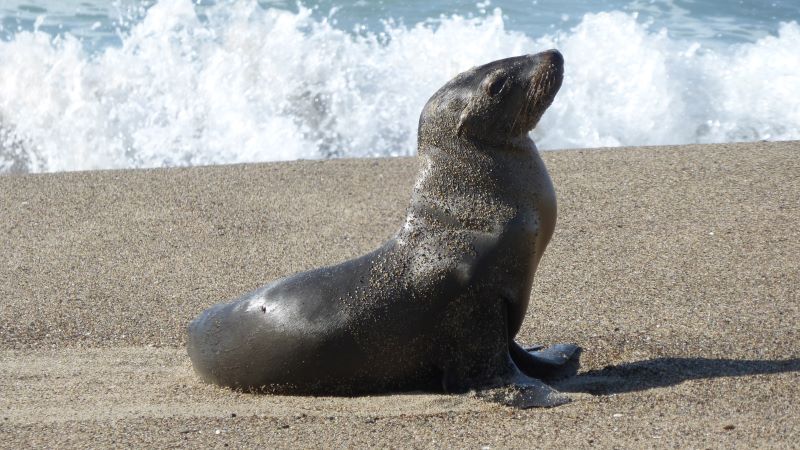
According to the Marine Mammal Care Center in San Pedro—the world’s largest marine mammal hospital—as many as 20 percent of all sea lion cases that arrive at the non-profit organization’s treatment facility are there because of damage caused by humans. Sea lions ingest garbage, become entangled in monofilament fishing line and nets, and are sometimes even shot by exasperated fishermen.
Sea lions are also at risk from diseases spread by dog feces, like kennel cough, and they were victims of both DDT poisoning and heavy metal poisoning from the lead and mercury in industrial waste and the unleaded gasoline used in the first three-quarters of the twentieth century.
Levels of those pollutants are declining, thanks to environmental protections, but sea lions continue to be at risk from the impacts of water pollution. A 2021 study released by the Pacific Marine Mammal Center found that viral-caused cancer in adult California sea lions is significantly increased by their exposure to toxins in the environment. The study is the result of over 20 years of research and examination of nearly 400 California sea lion patients.
“Since the cancer in sea lions was first discovered in 1979, between 18-23 percent of adult sea lions admitted to the Center’s hospital have died of the fatal disease – the highest prevalence for a single type of cancer in any mammal, including humans.” the report finds.
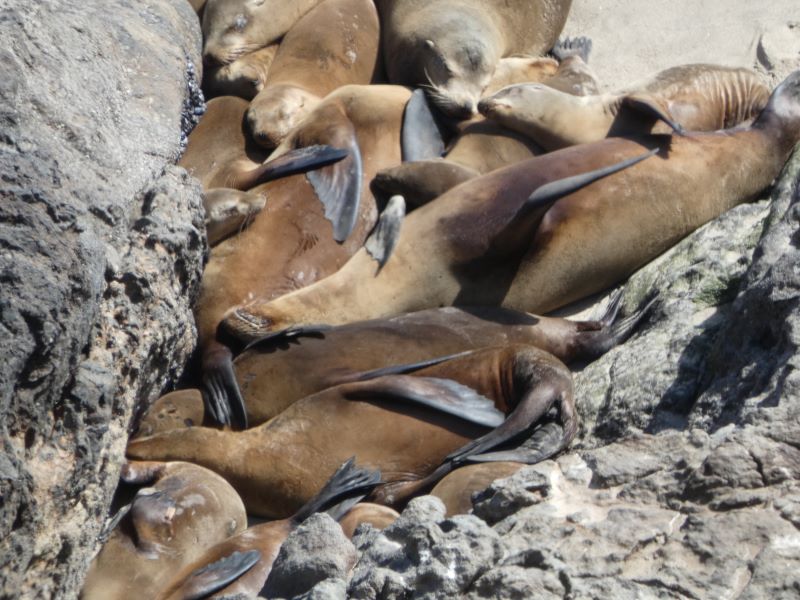
Despite the challenges California sea lions face, this species continues to endure. They remain the most frequently encountered species of marine mammal along the local coast. Sea lions pop up in the surf lineup among the surfers, or poke a head out of the water for a look at those strange humans on the beach. They gather on any convenient rock or buoy to enjoy the sun and exchange opinions with a large vocabulary of barks, grunts, and snorts.
Most of the mature local sea lions head for the Channel Islands to mate and give birth in the summer months. Pups are born in May and June, mating season takes place in July and August.
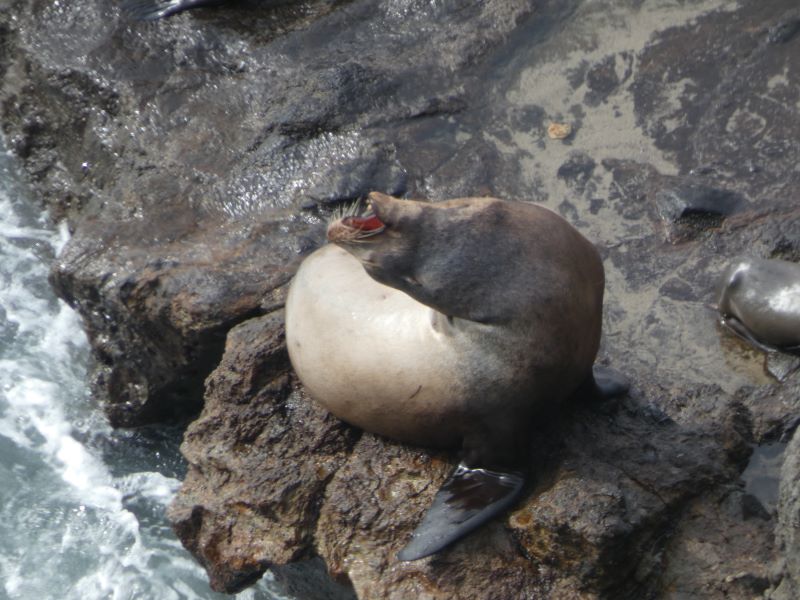
Sea lions aren’t sexually mature until they are around four or five. Males, or bulls, arrive at the breeding colonies early and stake out territories for themselves. They attempt to secure as many females as possible, and defend their territory with a combination of operatic arias delivered in baritone bellows, and fierce lunges at interlopers. Successful bulls may mate with as many as 15 females and spend the breeding season guarding their group of mates without taking time to hunt or eat. Once the breeding season is over, the males—and sometimes females without pups—disperse. In El Nino years, California sea lions have been observed as far north as Oregon and Washington. Males spend the rest of the year making up for fasting during the summer.
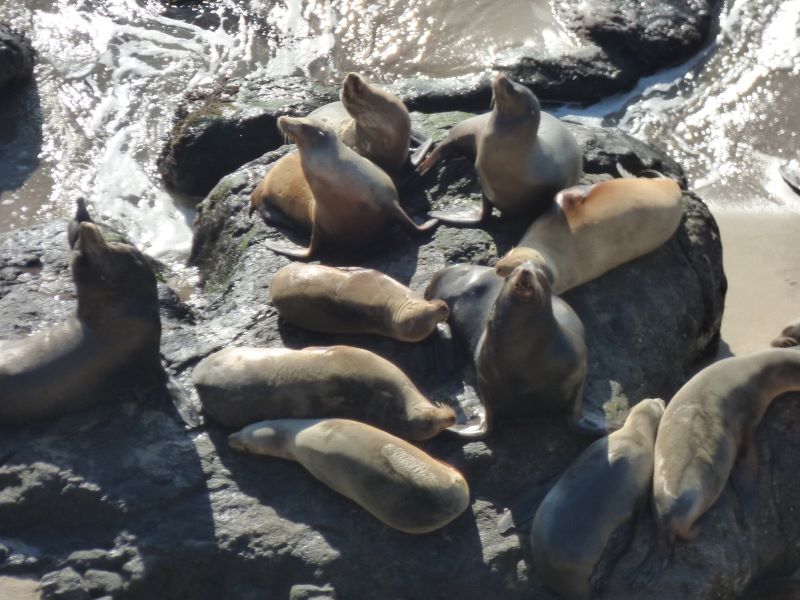
Females, or cows, must give birth on land. After a few days of bonding and nursing, young pups are left on the shore while their mothers forage for food. The mother returns every few days to nurse her pup. Once the pup is a few weeks old it is ready to begin learning to swim and hunt for food. Pups sometimes get into trouble when they become separated from their mothers for too long, or after they are weaned but are still not adept at foraging on their own. Stranded sea lion pups tend to show up in late winter, early spring on the local coast. This was a relatively uneventful year, but that isn’t always the case.
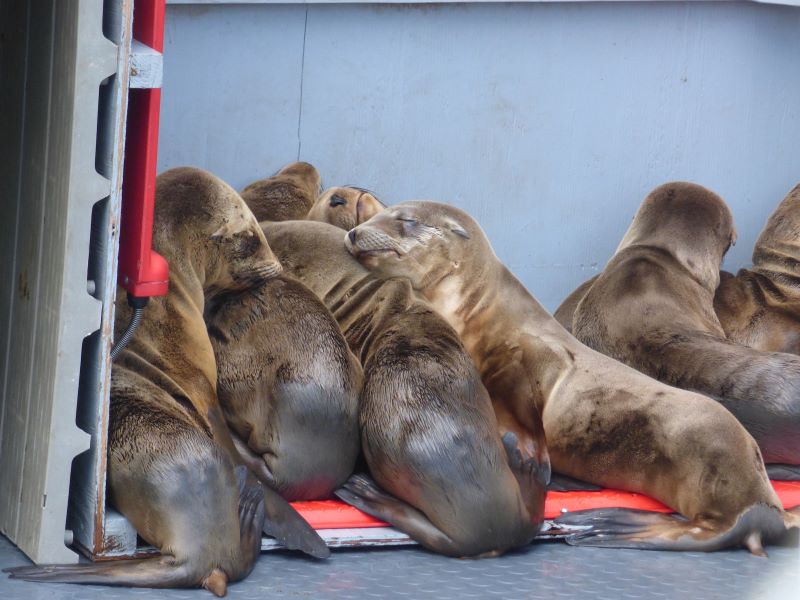
Local sea lions weathered an Unusual Mortality Event from 2013-2016, which resulted in the stranding of 7,587 juvenile California sea lions, and the death of hundreds more, and sent rescue organizations scrambling for resources.
Spring, just before the breeding season starts, is the best time to look for sea lions on the local coast, but there are almost always some around. They pop up to watch beachgoers with apparent interest, and are often seen swimming with whales or dolphins. They are curious and interested in boats, surfers, swimmers, and anything else that might be happening in the vicinity. They appear to love surfing just for the fun of it, catching waves with ease. It’s easy to anthropomorphize them, but they give every appearance of enjoying life and having fun.
Sea lions have been called sea wolves for their dog-like vocalizations, and sea angels, for their wing-like flippers—pinniped means feather, or wing, foot. Sea lions have been mistaken for mermaids, but also hunted for their fur coats and blubber, and killed by the fishing industry for competing for fish and the intelligence to snatch it off fishing lines and out of nets. Despite facing constant adversity, they continue to endure: a lively, joyful presence on our coast.
Humans can help sea lions by picking up dog waste and making sure it and all other kinds of contaminants stay out of creeks and off the beach, and by keeping a safe distance, no matter how tempting it may be to take a closer look. The non-profit rescue organizations that care for sea lions always need supplies and donations, learn more at: www.pacificmmc.org and www.cwwildlife.org






